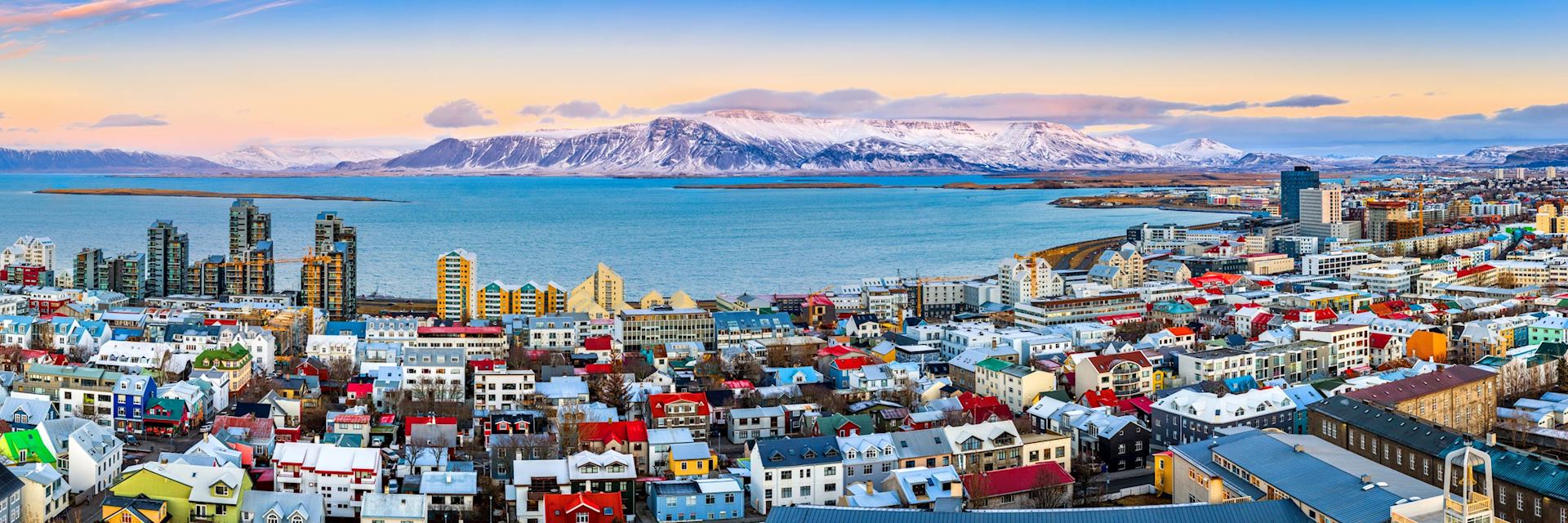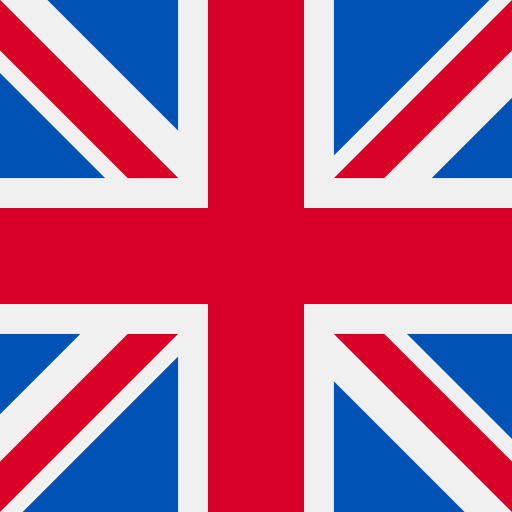Cheap city breaks in Europe are an excellent way to explore the continent without spending the earth and the best news is many of these can be visited by cruise.
Cheap city breaks in Europe are an excellent way to explore the continent without spending the earth and the best news is many of these can be visited by cruise.
The cheapest European city breaks for couples have been revealed in new research to help holidaymakers get the most bang for their buck.
Visiting these continental gems doesn’t always have to be done by land, however. Yes, it’s easy to think the Mediterranean is the only place for a cruise holiday in Europe but that’s far from the case, thanks to the plethora of river cruises offered all across the continent, not to mention other fabulous sea options from the Adriatic coast to the Baltics.
The recent study, conducted by travel insurance experts Forbes Advisor, analysed the cost of a two-day trip for two people from the UK to each European capital city across various cost of living websites.
This included the average price for return flights for two people, two nights’ accommodation, two days’ worth of excursions, a taxi for the entire vacation, and meals out as well as alcohol.
We’ve picked out five of these European cities you can visit on a cruise, whether you’re organising a pre or post-cruise stay or just dropping in for the day mid-voyage, no piggy bank breaking required.
Belgrade in Serbia is located at the confluence of the Sava and Danube Rivers and is one of the oldest cities in Europe.
It’s the cheapest of the five cruise destinations on the list and will undoubtedly appeal to foodies looking for a short break on a budget, as the cost of meals out for the two days comes in at just £12.
What’s more, the choice of restaurants is impressive. Tuck into Balkan dishes such as cevapcici (meat rissoles), Sarma (spicy minced meat rolled in sour cabbage leaves) and roasted red peppers stuffed with cheese in traditional Serbian restaurants or dine in Asian, Italian and Spanish eateries amid waterfront restaurants at Beton Hala.
Accommodation is also wallet-friendly, at only £78 for two days, should you choose to tack on a stay before or after your sailing. Taxi prices are also super cheap.
Among the top attractions in Belgrade (meaning ‘White City’) is the Belgrade Fortress (or Kalemegdan Fortress) – a citadel dating back to Celtic times, extended by Romans and then further elaborated in the 18th century. It’s been destroyed more than 40 times over the years and is now a stately park.
For museum lovers, there is the Museum of Yugoslavia, home to more than 200,000 artefacts representing the fascinating history of the former country from artworks, photographs and historical documents to treasures, weapons and films.
Don’t miss Marshal Tito’s Mausoleum here. Tito was the president of Yugoslavia in 1953, helping to rebuild the country following the second world war until he died in 1980, and is the country’s most famous leader.
His tomb is enormous and set amongst peaceful surroundings alongside thousands of elaborate relay batons presented to him by young ‘Pioneers’ and other gifts from political leaders.
For art, check out the Museum of Contemporary Art and the Zepter Museum and do find time to visit the Orthodox cathedral and wander the Square of the Republic as well.
Viking River Cruises operate sailings along the Danube calling at Belgrade as well as Bucharest in Romania, several Bulgarian ports of call and Budapest in Hungary.
Prague in the Czech Republic is situated on the River Vltava and is surprisingly affordable given its fame. Meals out for two days will only set couples back by £34 and alcohol by a mere £15.
It’s also highly romantic; Prague is one of the most picturesque cities in Europe and is known as “the city of a hundred spires” thanks to its numerous Gothic churches.
The architecture here is splendid and wide-ranging, from Rococo palaces and Baroque castles to neoclassical theatres, and simply wandering the city and its UNESCO World Heritage Site historic centre is richly rewarding.
Also terrific is the beer scene – the Czechs have been producing some of the best beers in the world for decades. Pilsner Urquell was first invented in 1842 and since then not only have brands such as Urquell, Staropramen and Budvar become internationally relished but countless microbreweries have sprung up with Czech pubs now offering a fantastically wide range of brews.
St Vitus Cathedral is the most famous church in the city. Built over almost 600 years, it’s home to a 14th-century mosaic of the Last Judgement, the tombs of St Wenceslas and Charles IV, and stained glass windows by art nouveau artist Alfons Mucha to name a few of its treasures.
Of course you can’t not stroll across the 600-year-old Charles Bridge with its baroque statue-lined parapets but note this is best done at dawn before the influx of tourists, buskers and hawkers. The most famous figure on the bridge is the monument to St John of Nepomuk, a priest who was thrown into the river in his armour for refusing to share the queen’s confessions, according to legend.
Meanwhile, Prague Castle is said to be the oldest and largest in the world and is the city’s most popular attraction. There are plenty of museums to explore, too – the National Gallery has art collections from the 19th to 21st centuries with works by Picasso and Van Gogh while Prague City Museum unveils the history of the capital back to prehistoric times. Don’t miss the famous astrological cock either!
Emerald Cruises offers sailings along the Danube which visit Prague (via a coach transfer). Other ports of call include Budapest, Bratislava in Slovakia and Vienna in Austria.
Podgorica in Montenegro may not be a city you know much about or have even heard of but getting to the Montenegrin capital is pretty cheap, with return flights for two only costing £252. While you’re there, couples spend an average of £56 on meals out for two days and £28 on booze.
The city sits at the confluence of two rivers, the Morača and the Ribnica but is more commonly visited as an excursion for those cruising the Adriatic coast and calling at Bar.
Podgorica has had a real patchwork history, passing through the hands of the Romans, the Turks and the Austro-Hungarians, making for a real variety of architecture, from brutalist blocks to Ottoman remains. The cafe culture is thriving, there are plenty of parks and the galleries are excellent, too.
Stara Varoš is Podgorica’s oldest neighbourhood. Looks out for the ruin of the Ribnica Fortress (built by the Ottomans after their conquest in 1474) and the arched bridge crossing the Ribnica as well as the 15th-century Starodoganjska Mosque and impressive 18th-century Osmanagić Mosque.
The majestic Serbian Orthodox Cathedral of Christ’s Resurrection is worth a visit. It features white stone towers, an enormous dome and gold crosses on the outside and huge chandeliers and gilded frescoes on the inside. Keep your eyes peeled for the image of Tito, Karl Marx and Friedrich Engels burning in hell in the apse above the front door.
For a spot of nature take a day trip to Montenegro’s Niagara Falls (yes, that’s right) which are at their best in the spring, or enjoy a wine tasting at Šipčanik Wine Cellar operated by Plantaže, Montenegro’s largest wine company. The 356m-long tunnel here was once a secret underground Yugoslav-era aircraft hangar.
Marella Cruises sails to Montenegro, calling at Bar from where a coach tour will take you to Podgorica.
Riga, the capital of Latvia, is another affordable option, with couples spending £550 on a short break away. Daily excursions only cost couples £20, food £44 and alcohol £28.
Riga is the largest city of the Baltic Republics and has become known as Little Paris of the Baltic thanks to its architecture and magnificent collections of Art Nouveau buildings.
A UNESCO World Heritage Site, the Latvian capital was founded in the 13th century and has been ruled by Germany, Sweden and Russia until eventually claiming independence.
Stroll the street of Alberta Iela brimming with art nouveau (or Jugendstil) architecture – mainly the work of architect Mikhail Eisenstein (father to filmmaker Sergei Eisenstein).
The street was named after the founder of Riga, Bishop Albert von Buxhoevden, and was a gift to Riga from Eisenstein on its 700th anniversary. Look up at many heads adorning the buildings – think screaming masks, snake-encircled faces, nasty goblins and fierce lions.
Riga Cathedral, founded in 1211, is the largest medieval church in the Baltic, and boasts a mélange of architectural styles, from Romanesque features to a baroque tower. Be sure to explore the Old Town, too, and if you have time take a drive to sea resort Jūrmala which boasts a beautiful white-sand beach backed by forests.
Princess Cruises sails the Baltic Sea calling at Riga along with Stockholm in Sweden, Tallinn in Estonia and Copenhagen in Denmark to name a few ports.
Only £11 more expensive for a couple’s city break is Bucharest in Romania. Excursions for two days are cheap, costing only £19, and alcohol is low cost too at £12 while meals for two over two days would set a duo back £76.
The city has also plenty to shout about when it comes to sights; Bucharest is known as the Paris of the East – it has a WWI Arc de Triomphe, belle époque villas and charming parks.
Communism’s role in Romanian history is nowhere more evident than at the enormous Palace of Parliament; created by former dictator Nicolae Ceauşescu, it’s the world’s second-largest administrative building after the Pentagon. The 330,000 sq-metre building has more than 3,000 rooms but is actually still unfinished, despite construction beginning back in 1984.
For more Ceauşescu history, visit the Ceauşescu Mansion, where the dictator and his wife lived for two decades until 1989. Highlights include the swimming pool, the cinema in the basement and the luxurious private chamber of Ceauşescu’s wife, Elena.
Also to be visited is the Romanian Athenaeum, at the core of Romania’s classical-music tradition and these days home to the George Enescu Philharmonic Orchestra – try and catch a concert if you can!
The Museum of the Romanian Peasant is one of the most popular museums in the city and is home to peasant costumes, icons and bric-a-brac; prestigious Bellu Cemetery is the resting place of many famous Romanian writers; and the diminutive Stavropoleos Church, dating back to 1724, is memorable with its ornate wooden interior and carved wooden doors.
Avalon Waterways cruises to Bucharest along the Danube also calling at Belgrade and offering scenic cruising through the Iron Gates Gorge.
Duration: 7 nights
Where: Dubrovnik, Croatia | Messina (for Mount Etna), Sicily | Valletta, Malta | Taranto, Italy | Corfu Town, Corfu | Bar, Montenegro | Dubrovnik, Croatia
Ship: Marella Explorer 2
Price: From £1, 205 pp






Sailawaze Editor Harriet has been a travel writer for nine years and specialised in cruising for more than three. Globetrotting highlights include flyboarding in Malaga, exploring waterfalls in Belize, ziplining in Costa Rica, truffle-hunting in Tuscany and whale-watching in Iceland. Next on her cruise bucket list is Antarctica – or any opportunity to see the Northern Lights! Next up: a Provence river cruise.
Become the first to know about win-a-cruise competitions, on-trend holiday inspo and don’t-miss travel advice from the experts.



 United Kingdom
United Kingdom USA
USA